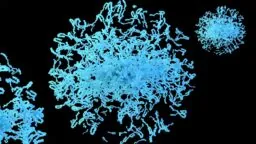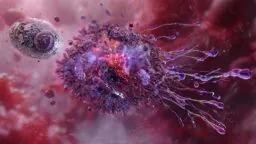Last month was full of news on both rejuvenation advocacy and rejuvenation advancements, including our new Public Longevity Group initiative along with our paper on Urolithin A being accepted into Aging Cell. Here’s what’s happened in September.
Team and activities
 Lifespan Research Institute Launches Public Longevity Group: On September 17, we announced the launch of the Public Longevity Group (PLG), an initiative focused on bridging the cultural gap between scientific breakthroughs in aging and their public acceptance. To kickstart its work, PLG has opened a crowdfunding campaign to develop tools that measure and strengthen public trust in longevity science. It is developing the first data-driven cultural intelligence system for longevity—a platform designed to track real-time sentiment, test narratives, and identify which messages resonate and which backfire.
Lifespan Research Institute Launches Public Longevity Group: On September 17, we announced the launch of the Public Longevity Group (PLG), an initiative focused on bridging the cultural gap between scientific breakthroughs in aging and their public acceptance. To kickstart its work, PLG has opened a crowdfunding campaign to develop tools that measure and strengthen public trust in longevity science. It is developing the first data-driven cultural intelligence system for longevity—a platform designed to track real-time sentiment, test narratives, and identify which messages resonate and which backfire.
The PLG campaign is sponsored by the members of LRI’s Lifespan Alliance, a consortium of mission-aligned organizations that believe in the promise of extending healthy human lifespan. Newly-joined members include OpenCures, AgelessRx, and Lento Bio.
Looking Back at Summer, Looking Forward to Growth: For those of us in the Northern Hemisphere, autumn is underway. The fall is a time when the leaves that are green turn to brown, so let us see what the Lifespan team has been working on to help our field keep our own metaphorical leaves green and healthy.
Advocacy and Analysis
 Two People Almost Died at RAADfest. We Went to the Experts.: Two people nearly died, and several more sought treatment, after receiving peptide injections at the last RAADfest in Las Vegas. We might not know what happened until the ongoing investigations are concluded, but we asked several experts to share their thoughts on the broader context of unproven “rejuvenation therapies.”
Two People Almost Died at RAADfest. We Went to the Experts.: Two people nearly died, and several more sought treatment, after receiving peptide injections at the last RAADfest in Las Vegas. We might not know what happened until the ongoing investigations are concluded, but we asked several experts to share their thoughts on the broader context of unproven “rejuvenation therapies.”
Some Bioethicists Promote Lifespan Limitation: A paper published in Bioethics makes a startling case for people to die at 100 years old rather than live as long as they might choose.
Research Roundup
Mitigating Pro-Inflammatory SASP and DAMP With Urolithin A: A Novel Senomorphic Strategy: In Aging Cell, scientists from Lifespan Research Institute and the Buck Institute for Research on Aging have published their findings that Urolithin A, a molecule that has garnered a lot of attention in the longevity field, potently reduces senescence-related markers in human fibroblasts. We reported on this paper in its preprint stage, before it had been published in a journal.
 A Non-Viral Gene Therapy Restores Mouse Hearts: A recent study investigated the roles of brown adipose tissue and a lipid-controlling hormone, 12,13-diHOME, in cardiac health. The researchers examined the molecular mechanisms behind 12,13-diHOME’s effects on the hearts of aged mice.
A Non-Viral Gene Therapy Restores Mouse Hearts: A recent study investigated the roles of brown adipose tissue and a lipid-controlling hormone, 12,13-diHOME, in cardiac health. The researchers examined the molecular mechanisms behind 12,13-diHOME’s effects on the hearts of aged mice.
Cancer Cells Transfer Mitochondria to Fibroblasts: Scientists have discovered that cancer cells recruit fibroblasts to support tumor growth by transferring mitochondria into them. Blocking this process might be a new way to fight the deadly disease.
 A Mechanism Behind Protein Aggregation Discovered: Scientists have found a pathway that regulates protein aggregation, a cause of several age-related neurodegenerative diseases. For instance, amyotrophic lateral sclerosis (ALS), Huntington’s disease, and Alzheimer’s disease have all been linked to abnormal protein aggregation.
A Mechanism Behind Protein Aggregation Discovered: Scientists have found a pathway that regulates protein aggregation, a cause of several age-related neurodegenerative diseases. For instance, amyotrophic lateral sclerosis (ALS), Huntington’s disease, and Alzheimer’s disease have all been linked to abnormal protein aggregation.
Study Boosts Brain Mitochondria, Rescues Memory in Mice: Scientists have found a way to directly stimulate the assembly of Complex I in mitochondria, rescuing memory deficits in mouse models of Alzheimer’s and frontotemporal dementia.
 Microglial Aging Is Determined by Their Environment: A new preprint study from Calico has found that the local brain environment is the primary driver of microglial aging. After being transplanted into old brains, young cells adopted aged characteristics, but their susceptibility to these signals could be turned off.
Microglial Aging Is Determined by Their Environment: A new preprint study from Calico has found that the local brain environment is the primary driver of microglial aging. After being transplanted into old brains, young cells adopted aged characteristics, but their susceptibility to these signals could be turned off.
Regular Glucosamine Use Linked to Fewer Chronic Diseases: An analysis of UK Biobank data showed an association between regular glucosamine use and significantly lower risks of seven non-communicable chronic diseases.
 Epigenetic Clocks Do Not Perfectly Capture Metabolic Health: In Aging Cell, researchers have published their surprising findings that epigenetic clocks are not significantly related to most measurements of metabolic health after weight loss interventions.
Epigenetic Clocks Do Not Perfectly Capture Metabolic Health: In Aging Cell, researchers have published their surprising findings that epigenetic clocks are not significantly related to most measurements of metabolic health after weight loss interventions.
Microplastics Cause Cognitive Deficits in APOE4 Mice: Scientists have demonstrated that short-term exposure to microplastics causes Alzheimer’s-like effects in mice expressing human APOE4 versus APOE3. These effects were sex-dependent, mirroring the disease in humans.
 How Macrophages Manage Obesity and Change With Age: In Nature Aging, researchers have identified and categorized several macrophage subtypes, including a subtype that appears with aging and another that manages nerve function.
How Macrophages Manage Obesity and Change With Age: In Nature Aging, researchers have identified and categorized several macrophage subtypes, including a subtype that appears with aging and another that manages nerve function.
A Short-Term High-Fat Diet Harms Memory in Mice: Scientists have demonstrated that even two days on a Western-like high-fat diet reduce hippocampal glucose availability, which activates a subset of inhibitory neurons and causes memory problems in mice.
 Partial Reprogramming Rejuvenates Aged Cells and Tissues: In this study, researchers investigated aging- and disease-associated changes in gene expression related to epithelial-mesenchymal transition. Inducing the Yamanaka factors in mice allowed them to rejuvenate cells and tissues and reverse some of these aging-associated changes.
Partial Reprogramming Rejuvenates Aged Cells and Tissues: In this study, researchers investigated aging- and disease-associated changes in gene expression related to epithelial-mesenchymal transition. Inducing the Yamanaka factors in mice allowed them to rejuvenate cells and tissues and reverse some of these aging-associated changes.
Lipid Metabolism Is Causal in Some Alzheimer’s Cases: In Aging Cell, researchers have outlined the relationship between Alzheimer’s, increased pain sensitivity, and the enzyme LPCAT2.
 AI Model Accurately Predicts Multiple Disease Risks: European scientists have created a GPT-based model that can predict the risk of more than a thousand diseases on par with single-disease tools and biomarker-based models.
AI Model Accurately Predicts Multiple Disease Risks: European scientists have created a GPT-based model that can predict the risk of more than a thousand diseases on par with single-disease tools and biomarker-based models.
Exercise Suppresses Appetite via a Brain Pathway: Scientists have discovered a pathway behind the known effect of exercise suppressing appetite: a lactate-related metabolite that acts directly on certain neurons.
 Personalized Medicine Approach to Senolytics Clinical Trials: Recent commentary in Nature Aging summarized the results of clinical trials for senolytics and discussed recommendations for future clinical trials that use personalized medicine approaches.
Personalized Medicine Approach to Senolytics Clinical Trials: Recent commentary in Nature Aging summarized the results of clinical trials for senolytics and discussed recommendations for future clinical trials that use personalized medicine approaches.
A Potential Reason Why Clotting Increases With Age: In Aging Cell, researchers have described a method by which platelet-forming cells are rapidly generated from hematopoietic stem cells (HSCs), bypassing the intermediate cell types that are normally used to get there.
 New Universal Therapy Effective in Multiple Tumor Types: Scientists have reported a breakthrough in treating solid tumor cancers using a Velcro-like tool that targets glycans, surface sugars especially abundant in cancer cells. This potentially off-the-shelf therapy does not need adjustment to individual cancer types or patients.
New Universal Therapy Effective in Multiple Tumor Types: Scientists have reported a breakthrough in treating solid tumor cancers using a Velcro-like tool that targets glycans, surface sugars especially abundant in cancer cells. This potentially off-the-shelf therapy does not need adjustment to individual cancer types or patients.
A Combination Greatly Extends Lifespan in Male Mice: The Conboy lab in Berkeley has discovered a treatment combination that greatly extends lifespan in old male mice and published its findings in Aging.
 Faulty Mitochondrial DNA Copying Might Cause Inflammaging: Scientists have discovered a possible mechanism behind age-related inflammation. It involves wrong building blocks being incorporated into mitochondrial DNA during replication and can be countered by adding the correct ones.
Faulty Mitochondrial DNA Copying Might Cause Inflammaging: Scientists have discovered a possible mechanism behind age-related inflammation. It involves wrong building blocks being incorporated into mitochondrial DNA during replication and can be countered by adding the correct ones.
Extension of lifespan by epicatechin, halofuginone and mitoglitazone in male but not female genetically heterogeneous mice: In addition to adding 3 new agents to the list of interventions identified by the ITP that extend lifespan, this report continues the strong male bias in the efficacy of life-extending drugs identified so far.
Short-term mTOR inhibition by rapamycin improves cardiac and endothelial function in older men: a proof-of concept pilot study: Cardiac and endothelial function improvements with RAPA were found and support future placebo-controlled studies in larger cohorts of healthy older persons as well as in patients with compromised diastolic and endothelial function.
A randomized, double blind, placebo-controlled, pilot study to fine tune an NT-proBNP-based method to assess the effect of anti-aging treatments: NT-proBNP levels increase exponentially with age and are associated with cardiovascular and all-cause mortality. From NT-proBNP concentration a surrogate for biological age (“proBNPage”) can be obtained.
Creatine and Cognition in Aging: A Systematic Review of Evidence in Older Adults: The current limited evidence suggests that creatine may be associated with benefits for cognition in generally healthy older adults. However, high-quality clinical trials are warranted to further validate this relationship.
Effect of henagliflozin on aging biomarkers in patients with type 2 diabetes: A multicenter, randomized, double-blind, placebo-controlled study: Metabolomic analysis shows that henagliflozin induces changes in various metabolites, including increased thiamine levels and enhanced thiamine metabolism. These findings suggest that henagliflozin may exert anti-aging effects through multiple pathways.
The multiomics blueprint of the individual with the most extreme lifespan: These findings provide a fresh look at human aging biology, suggesting biomarkers for healthy aging, and potential strategies to increase life expectancy.
Repeated Withdrawal of a GLPR Agonist Induces Hyperleptinemia and Deteriorates Metabolic Health in Obese Aging UM-HET3 Mice: These findings suggest that continuous GLP-1-based therapy is necessary to sustain metabolic benefits, while intermittent use may promote age-associated sarcopenia and metabolic decline.
Omega-3 Polyunsaturated Fatty Acids and Cognitive Decline in Adults with Non-Dementia or Mild Cognitive Impairment: These findings support n3-PUFA supplementation as a complementary approach to lifestyle-based strategies for cognitive health, including diet, physical activity, sleep optimization, and cognitive training.
Association of Eating Window With Mortality Among US Adults: Insights From a Nationally Representative Study: Moderate eating windows (~11–12 h/day) are linked to the lowest mortality risk, with deviations associated with higher risk. Differences across demographic groups highlight the need for personalized guidance.
Serum Vitamin C concentrations are inversely related to biological aging: a population-based cross-sectional study: Serum Vitamin C levels exhibit an inverse association with biological aging, particularly in older individuals and those with chronic conditions, highlighting the potential role of Vitamin C in healthy aging.
An Exercise Intervention May Counteract the Degradation of Nerve Conduction from Age-Related Disuse: The results of this study suggest that resistance training may be a viable method to counteract age-related nerve deterioration. These outcomes have the potential to improve quality of life and generate greater independence for our older populations.
SenolyticSynergy: An Attention-Based Network for Discovering Novel Senolytic Combinations via Human Aging Genomics: This framework paves the way for large-scale research into anti-aging drug combinations, advancing research capabilities in this field.
In Silico Assessment of Potential Geroprotectors: From Separate Endpoints to Complex Pharmacotherapeutic Effects: Validation using known geroprotectors (rapamycin, metformin, and resveratrol) demonstrated strong concordance between predicted activities and documented molecular mechanisms of action.
Partial Reprogramming in Senescent Schwann Cells Enhances Peripheral Nerve Regeneration via Restoration of Stress Granule Homeostasis: Dysregulated stress granule homeostasis drives the pathological accumulation of Runx2+ Schwann cells, representing a key mechanism underlying age-related axonal regeneration deficits in peripheral nerve repair.
Single-Short Partial Reprogramming of the Endothelial Cells Decreases Blood Pressure via Attenuation of EndMT in Hypertensive Mice: Overall, these data indicate that OSK treatment and EC reprogramming can decrease blood pressure and reverse hypertension–induced vascular damage.
News Nuggets
 Countdown to the Longevity Investors Conference 2025: From 22–25 September 2025, the sixth edition of this conference took place at the five-star hotel Le Grand Bellevue in Gstaad, Switzerland – a discreet alpine setting that combines world-class luxury with the privacy essential for meaningful dialogue.
Countdown to the Longevity Investors Conference 2025: From 22–25 September 2025, the sixth edition of this conference took place at the five-star hotel Le Grand Bellevue in Gstaad, Switzerland – a discreet alpine setting that combines world-class luxury with the privacy essential for meaningful dialogue.
LongX Hosts the Youth in Longevity Biotech Showcase: On September 18, 2025, Longevity Xplorer (LongX) hosted the first-ever “Youth in Longevity Biotech Showcase”, a virtual event featuring lightning talks from young professionals in longevity fellowships around the world.
 YouthBio Therapeutics Announces Positive FDA Feedback: YouthBio Therapeutics, a biotechnology company pioneering partial cellular reprogramming to treat diseases of aging, today announced a successful INTERACT meeting with the FDA for its lead Alzheimer’s candidate, YB002.
YouthBio Therapeutics Announces Positive FDA Feedback: YouthBio Therapeutics, a biotechnology company pioneering partial cellular reprogramming to treat diseases of aging, today announced a successful INTERACT meeting with the FDA for its lead Alzheimer’s candidate, YB002.


